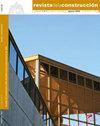Prediction of the mechanical properties of concrete incorporating simultaneous utilization of fine and coarse recycled aggregate
IF 1.4
4区 工程技术
引用次数: 0
Abstract
The mechanical properties of concrete were optimized using response surface methodology (RSM) and fuzzy logic. The aggregate portion of the concrete was replaced with recycled aggregate to address the environmental problems caused by building demolition wastes. The essential key factors that influenced the suitability of recycled aggregate in concrete applications are the compressive strength (CS), flexural strength (FS), and the split tensile strength (STS). The experiments were designed with nine combinations of two input factors (percentage of coarse and fine recycled aggregates) at different levels 30, 60, and 100%. Furthermore, optimization techniques were used to determine the strong correlations between the variables and the mechanical parameters. Such optimization techniques helped to identify the optimistic maximum strength for replacing 44% coarse and 65% fine recycled aggregate. Using RSM, the maximum strength results were found to be: CS at 7, 28, 56, and 90 days were 23.61, 35.04, 40.02, and 43.63 N/mm2, respectively, FS 3.6 N/mm2 and STS 2.0 N/mm2. The maximum strength parameters were found using fuzzy logic: CS at 7, 28, 56, and 90 days were 23.5, 35.8, 41, and 46.7 N/mm2, respectively, FS 4.13 N/mm2 and STS 1.97 N/mm2. Such optimization can be carried out to lower the material wastage, energy consumption, and expenses for the production.细粗再生骨料同时使用混凝土力学性能预测
采用响应面法和模糊逻辑对混凝土力学性能进行了优化。混凝土的骨料部分用再生骨料代替,以解决建筑拆除废物造成的环境问题。影响再生骨料在混凝土应用中的适用性的关键因素是抗压强度(CS)、抗折强度(FS)和劈裂抗拉强度(STS)。试验采用粗、细再生骨料比例分别为30%、60%和100%的9种输入因子组合设计。此外,利用优化技术确定了变量与力学参数之间的强相关性。这些优化技术有助于确定替代44%粗骨料和65%细骨料的乐观最大强度。采用RSM方法,最大强度结果为:CS在7、28、56和90 d分别为23.61、35.04、40.02和43.63 N/mm2, FS为3.6 N/mm2, STS为2.0 N/mm2。采用模糊逻辑计算得到最大强度参数:第7、28、56和90天,CS分别为23.5、35.8、41和46.7 N/mm2, FS为4.13 N/mm2, STS为1.97 N/mm2。这样的优化可以降低生产的材料浪费、能源消耗和费用。
本文章由计算机程序翻译,如有差异,请以英文原文为准。
求助全文
约1分钟内获得全文
求助全文
来源期刊

Revista de la Construccion
工程技术-工程:土木
CiteScore
2.30
自引率
21.40%
发文量
0
期刊介绍:
The Journal of Construction is aimed at professionals, constructors, academics, researchers, companies, architects, engineers, and anyone who wishes to expand and update their knowledge about construction. We therefore invite all researchers, academics, and professionals to send their contributions for assessment and possible publication in this journal. The publications are free of publication charges.
OBJECTIVES
The objectives of the Journal of Construction are:
1. To disseminate new knowledge in all areas related to construction (Building, Civil Works, Materials, Business, Education, etc.).
2. To provide professionals in the area with material for discussion to refresh and update their knowledge.
3. To disseminate new applied technologies in construction nationally and internationally.
4. To provide national and foreign academics with an internationally endorsed medium in which to share their knowledge and debate the topics raised.
 求助内容:
求助内容: 应助结果提醒方式:
应助结果提醒方式:


